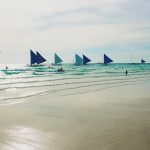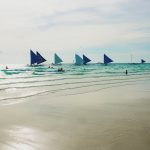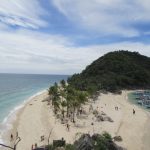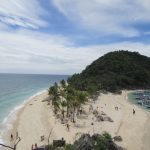Download links
How to install Exploring the Wonders of Palawan: A Paradise Found APK?
1. Tap the downloaded Exploring the Wonders of Palawan: A Paradise Found APK file.
2. Touch install.
3. Follow the steps on the screen.
Description
Palawan, often referred to as the last frontier of the Philippines, is a breathtaking archipelago that captivates visitors with its stunning landscapes and pristine environments. The island is renowned for its dramatic limestone cliffs, lush tropical forests, and crystal-clear waters that shimmer in various shades of blue and green. One of the most iconic sights is the towering karst formations that rise majestically from the sea, creating a striking contrast against the vibrant hues of the ocean.
These natural wonders are not merely picturesque; they are a testament to millions of years of geological processes that have shaped the region into a paradise for nature lovers and adventure seekers alike. The allure of Palawan extends beyond its geological features. The island is home to an array of ecosystems, from mangroves to coral reefs, each teeming with life.
The landscapes are punctuated by hidden lagoons, secluded beaches, and enchanting waterfalls, all of which contribute to the island’s reputation as a visual feast. Visitors can explore the breathtaking scenery through various activities such as hiking, kayaking, and island hopping. Each turn reveals new vistas that seem almost otherworldly, making it easy to understand why Palawan has been dubbed one of the most beautiful islands in the world.
The interplay of light and shadow on the water, combined with the vibrant colors of the flora and fauna, creates a sensory experience that lingers long after one has left.
Key Takeaways
- Palawan offers stunning natural beauty, from its pristine beaches to its lush jungles and towering limestone cliffs.
- The diverse marine life in Palawan makes it a paradise for snorkelers, with colorful coral reefs and a wide variety of fish and other sea creatures.
- The underground river in Palawan is a UNESCO World Heritage Site, offering visitors a chance to explore a unique and breathtaking natural wonder.
- Palawan’s indigenous culture provides a fascinating glimpse into the past, with traditional practices, crafts, and beliefs still being preserved and celebrated.
- Sustainable tourism in Palawan is crucial for balancing the preservation of its natural and cultural heritage with the development of its tourism industry, ensuring the long-term well-being of the region.
- Palawan’s culinary scene offers a taste of local flavors, with fresh seafood, tropical fruits, and traditional dishes that reflect the region’s rich cultural heritage.
The Diverse Marine Life of Palawan: A Snorkeler’s Dream
Exploring the Rich Marine Life
Snorkelers and divers are often greeted by schools of tropical fish darting among the corals, while larger species such as sea turtles and reef sharks glide gracefully through the water.
The Importance of Coral Reefs
The coral reefs serve as vital habitats for countless marine species, providing food and shelter while also protecting coastlines from erosion. The experience of snorkeling in Palawan is not just about observing marine life; it is about immersing oneself in a vibrant ecosystem that plays a crucial role in maintaining the health of our oceans.
Conservation Efforts and the Future
As snorkelers glide through the water, they witness firsthand the intricate relationships between species and their environments. This connection fosters a deeper appreciation for marine conservation efforts, highlighting the importance of protecting these delicate ecosystems from threats such as climate change and overfishing.
Exploring Palawan’s Underground River: A World Heritage Site
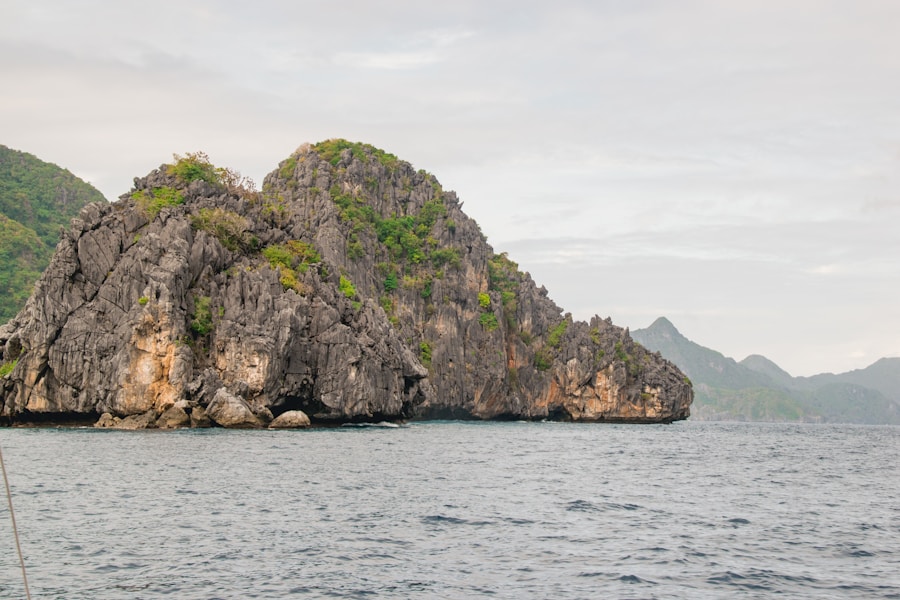
One of Palawan’s most remarkable natural wonders is the Puerto Princesa Subterranean River National Park, which features an underground river that flows through a stunning limestone cave system. This UNESCO World Heritage Site is not only a geological marvel but also a biodiversity hotspot. The river stretches approximately 8.2 kilometers and winds its way through a series of impressive chambers adorned with stalactites and stalagmites.
Visitors can take guided boat tours that navigate through the dark waters, revealing breathtaking rock formations illuminated by soft lighting. The underground river is more than just a visual spectacle; it plays a significant role in the local ecosystem. The surrounding park is home to diverse flora and fauna, including several endemic species that thrive in this unique environment.
Birdwatchers can spot various species, including the endangered Philippine cockatoo and the blue-naped parrot, while hikers can explore trails that lead to scenic viewpoints overlooking the river. The combination of geological beauty and ecological significance makes this site a must-visit for anyone traveling to Palawan, offering an unforgettable glimpse into nature’s artistry.
The Indigenous Culture of Palawan: A Glimpse into the Past
| Aspect | Metrics |
|---|---|
| Population | Estimated 40,000 indigenous people |
| Languages | Various indigenous languages such as Palawano, Tagbanwa, and Batak |
| Traditional Practices | Use of traditional healing methods, rituals, and crafts |
| Beliefs | Animistic beliefs and reverence for nature |
| Challenges | Threats to cultural preservation and land rights |
Palawan is not only rich in natural beauty but also steeped in cultural heritage. The island is home to several indigenous groups, including the Tagbanua, Batak, and Palaw’an peoples, each with their own unique traditions and ways of life.
Their deep connection to nature is reflected in their customs, art forms, and spiritual beliefs. Visitors to Palawan have the opportunity to engage with these indigenous cultures through community-based tourism initiatives that promote cultural exchange and understanding. Travelers can participate in traditional activities such as fishing, hunting, or crafting handmade goods using local materials.
By fostering respect for their traditions and knowledge systems, visitors contribute to the preservation of these cultures in an increasingly modern world.
Sustainable Tourism in Palawan: Balancing Preservation and Development
As one of the Philippines’ top tourist destinations, Palawan faces the challenge of balancing economic development with environmental preservation. The influx of visitors has led to increased pressure on natural resources and ecosystems, prompting local governments and organizations to implement sustainable tourism practices. These initiatives aim to minimize negative impacts on the environment while maximizing benefits for local communities.
Sustainable tourism in Palawan encompasses various strategies, including responsible waste management, conservation programs, and community engagement efforts. For instance, many resorts and tour operators are adopting eco-friendly practices such as using solar energy, reducing plastic waste, and supporting local conservation projects. Additionally, educational programs raise awareness among tourists about the importance of protecting fragile ecosystems and respecting local cultures.
By promoting sustainable tourism practices, Palawan seeks to ensure that its natural beauty and cultural heritage can be enjoyed by future generations while providing economic opportunities for its residents.
The Culinary Delights of Palawan: A Taste of Local Flavors

The culinary scene in Palawan is as diverse as its landscapes, offering a delightful array of flavors that reflect both local traditions and influences from various cultures. Seafood takes center stage in many dishes due to the island’s abundant marine resources. Fresh catches such as fish, shrimp, and crabs are often prepared using simple yet flavorful techniques that highlight their natural taste.
One popular dish is “kinilaw,” a Filipino version of ceviche made with raw fish marinated in vinegar or citrus juices, mixed with onions, ginger, and chili peppers. In addition to seafood, Palawan’s cuisine features an assortment of tropical fruits and vegetables that thrive in its fertile soil. Dishes like “lumpiang ubod,” a spring roll filled with heart of palm and vegetables, showcase local ingredients while offering a taste of traditional Filipino flavors.
Street food stalls offer an opportunity to sample local delicacies such as “taho,” a sweet snack made from silken tofu topped with syrupy caramel and sago pearls. Dining in Palawan is not just about satisfying hunger; it is an exploration of culture through food that connects visitors to the island’s rich heritage. Palawan’s culinary landscape also reflects its commitment to sustainability.
Many restaurants prioritize sourcing ingredients from local farmers and fishermen, ensuring that meals are fresh while supporting the local economy. This farm-to-table approach not only enhances flavor but also fosters a sense of community among producers and consumers. As visitors savor the diverse flavors of Palawan, they partake in a culinary journey that celebrates both tradition and innovation while contributing to the preservation of local culture and resources.
If you’re planning a trip to Palawan, you might want to check out this article on Where’s My Water 2. This fun and addictive game could be a great way to pass the time during your travels or while relaxing on the beach. Plus, it’s always good to have some entertainment options handy when you’re on vacation. So why not give it a try and see if you can solve all the puzzles before you reach your destination in Palawan?
FAQs
What is Palawan?
Palawan is an island province in the Philippines located in the Mimaropa region. It is known for its stunning natural beauty, including pristine beaches, crystal-clear waters, and lush forests.
What are the popular tourist attractions in Palawan?
Some popular tourist attractions in Palawan include the Puerto Princesa Subterranean River National Park, El Nido, Coron, and the Tubbataha Reefs Natural Park. These destinations offer opportunities for diving, snorkeling, island hopping, and exploring natural wonders.
What is the best time to visit Palawan?
The best time to visit Palawan is during the dry season, which typically runs from November to May. This period offers sunny weather and calm seas, making it ideal for beach activities and island exploration.
How do I get to Palawan?
Palawan can be accessed by air through the Puerto Princesa International Airport, as well as through the Busuanga Airport in Coron and the El Nido Airport. There are also ferry services available from Manila and other nearby islands.
Is Palawan safe for tourists?
Palawan is generally considered safe for tourists. However, it is always important to exercise caution and be aware of your surroundings, especially in crowded areas and tourist spots. It is also advisable to follow local regulations and guidelines to ensure a safe and enjoyable visit.

